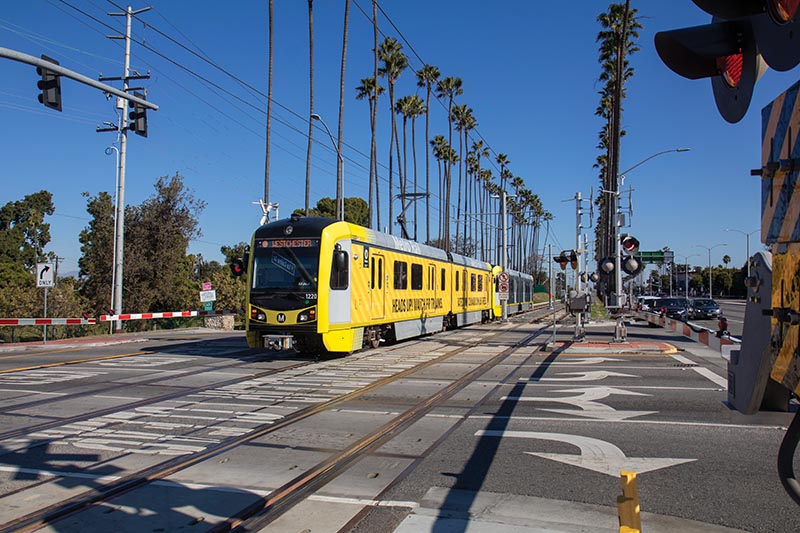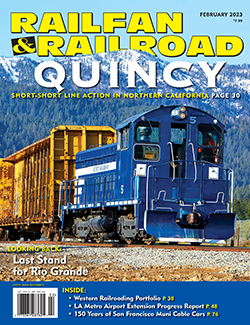 by Michael Sadovnick/photos as noted
by Michael Sadovnick/photos as noted
Having just landed after a long flight, and tired from a day of traveling, one is faced with a variety of choices for transportation to their local destination. For many domestic airports, options are lacking beyond rental vehicles, taxis, or rideshares, as convenient public transit connections are not available to nearby downtowns and suburbs. However, the situation has been continually improving for those traveling to West Coast destinations as most major cities now possess an airport rail transit connection. And now the world’s third-busiest airport joins the ranks of these integrated air terminals.
Located about 20 miles south of downtown Los Angeles, Los Angeles International Airport (LAX) handles more than one million passengers per month and is regularly congested, much to the frustration of travelers passing through its seven terminals. Hundreds of thousands of personal vehicles, rideshares, taxis, and shuttle buses add to the daily strain along the airport’s interior loop roads.
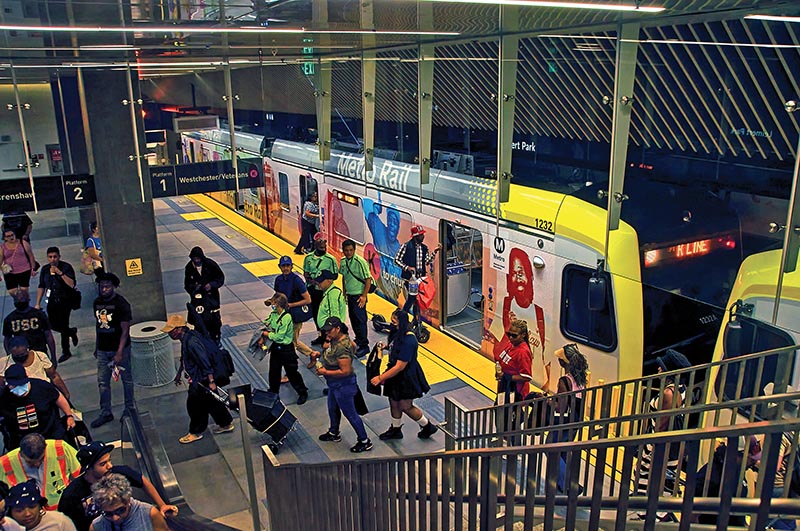
ABOVE: Riders exit a train at the newly opened Leimert Park Station. Celebrations involving entertainment and various local vendors were held in Leimert Park to commemorate opening the line. —Michael Sadovnick photo
The latest LA Metro light rail extension represents a significant milestone as it is part of a long-planned connection to LAX. The Crenshaw/LAX K Line is an 8.5-mile route which will ultimately provide a connection from the existing C Line to the south and run north to the intersection of the existing E Line, where passengers can then transfer to reach either downtown Los Angeles or Santa Monica. It is also the only route not originating in downtown Los Angeles, making it the first segment of an expanding grid-based system.
LAX Light Rail Connection: History and Planning
Since the late 1980s, transportation planners with the Los Angeles County Transportation Commission (LACTC) — the predecessor agency to the present-day Los Angeles County Metropolitan Transportation Authority (LACMTA) — have long sought a rail transit connection to LAX. It’s no wonder that Los Angeles, with its checkered history with rail transit, would wait for so long to get on board with a modern mass transit system of its own. With bitter memories of the former extensive Pacific Electric and Los Angeles Railway systems being bought up and dismantled in the 1950s and 1960s, and the rise of freeway construction shifting the public’s preference to private automobiles, it would take a prominent leader to advocate for change. As such, Los Angeles residents would have to wait almost 30 years until the political winds in city leadership changed to realize their regret.
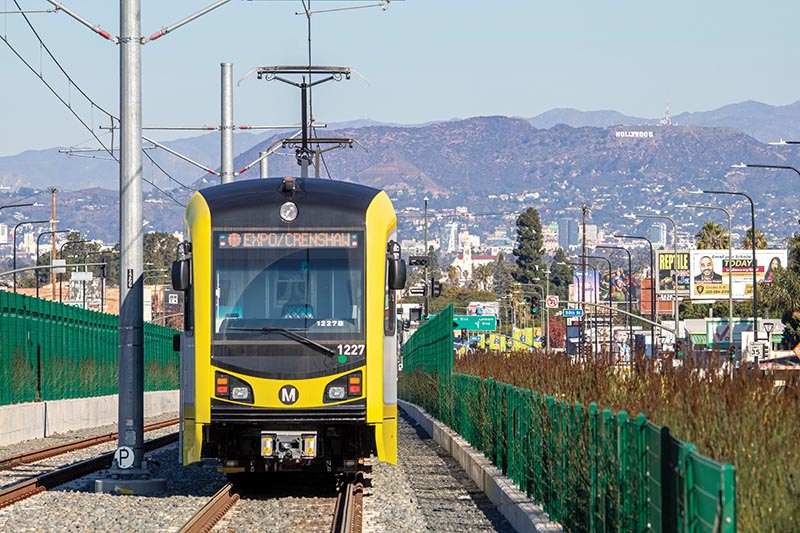
ABOVE: With Mount Lee, the Hollywood sign, and Hollywood itself in the distance, a K Line train rolls north on Crenshaw Boulevard. —Charles Freericks photo
Serious proposals to build a new light rail transit line to connect downtown with the airport began to gain traction in the 1970s, advocated by then-mayor Tom Bradley (for whom, incidentally, the new international terminal at LAX is named) who promised to establish new rail transit lines as a way to alleviate the increasing automobile traffic synonymous with the region. Angelinos would finally see some of these plans come to fruition when the first segments of the new LA Metro opened in 1990.
Looking back, choosing the route to reach LAX was a contentious process starting from the line’s initial proposal in the early 1990s, which would result from the combination of efforts on separate fronts to tie two differing transit objectives together. LACTC planners scrapped initial plans for an airport connector during the construction of the C Line. In the haste of that unfulfilled decision remained a partially constructed elevated interchange, a long-standing reminder of a route that would (almost) never be.
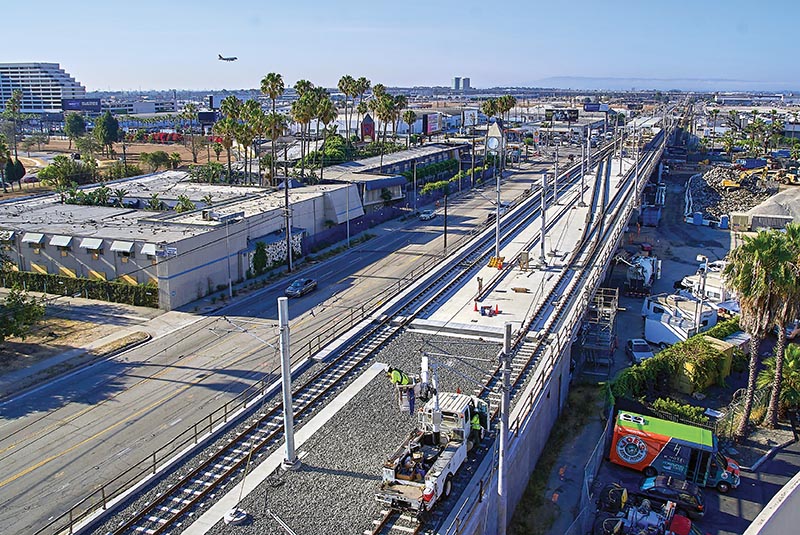
ABOVE: A contractor’s crew makes adjustments to the catenary in preparation for train testing in fall 2018 at Aviation/Century Station, adjacent to LAX Airport, and the first station stop after traversing the junction with the existing C line. Visible in the background is the 1100-foot underground segment trains will traverse underneath the runway approach zones to avoid potential interference with airport operations and to accommodate future expansions.
—Michael Sadovnick photo
Second, around the same time in 1993, with parts of South Los Angeles reeling from the aftermath of the 1992 riots, local leaders such as then-State Senator Diane Watson and County Supervisor Yvonne Brathwaite Burke advocated for new transit lines along the underserved Crenshaw Corridor, the second-busiest transit corridor in Los Angeles. With the support of local leaders secured, funding for what would become the Crenshaw Line became closer to reality.
Passage of the Measure R ballot initiative in 2008, a half-cent sales tax increase, provided a significant infusion of funding for various transportation improvement projects with 35 percent allocated for transit projects. This provided a projected $40 billion for new transit construction over the next 30 years. Around 80 percent of the Crenshaw Line’s original estimated cost of $1.7 billion was covered by Measure R funds, with the remainder covered by federal funds and matching state and local funds. Subsequent passage of the separate Measure M in 2016 would sharply increase the projection to $140 billion in 30 years…


